Mission Summary Crew 220
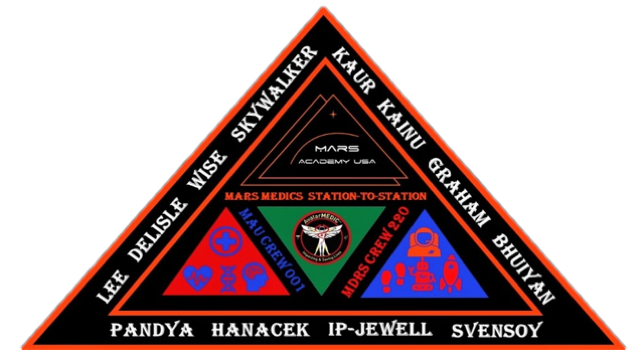
MDRS & MAU “Station-to-Station” MARS MEDICS Mission
INTRODUCTION
The first Mars Academy USA and Mars Desert Research Station MAU-MDRS “Station-to-Station” Mars Medics Analog Astronaut Training Missions was successfully conducted at the Mars Desert Research Station, in Hanksville, Utah. A trans-disciplinary team of analog astronauts, medical professionals and researchers will live and work together at MAU and MDRS stations and will conduct various “station-to-station” interactivities, test novel technologies and develop countermeasures and mitigation protocols and new medical capabilities that will enable humans to survive in austere, remote, Isolated and Confinement Environments (I.C.E) in Space and help improve life on Earth.
MISSION OBJECTIVES:
- TEST A “STATION-TO-STATION” MODEL PARADIGM. Training professionals in the fields of space medicine, aerospace, explorers, innovators, developers, artists, academics, scientists, and researchers in analogue astronautics to support future long-duration space missions, planetary surface explorations and spin-off benefits to improve life on Earth.
- HUMAN READINESS LEVEL (HRL) & TECHNOLOGY READINESS LEVEL (TRL):
Testing and development of countermeasures and mitigation strategies to address the
myriad of human factors and behavioral challenges for crews and/or astronauts living in
austere, extreme I.C.E. (Isolated and Confinement Environments) in Space or in remote
regions on Earth.
- DEVELOP NEW PROTOCOLS & STANDARD OPERATIONAL PROCEDURES
Improve state-of-the-art in healthcare delivery and medical access for remote, austere populations and astronauts. Create and develop new “gold standards” in Standard Operational Procedures (SOP) and protocols for I.C.E. scenarios to transform and Space Medicine, Disaster and Extreme Medicine.
- DEVELOPMENT “JUST-IN-TIME” MEDICAL TRAINING: developing and testing interactive, fully immersive just-in-time” tele-mentoring medically-focused training in I.C.E, integrating exponential technologies, eg, spatial computing, VRAR Training Simulations, robotics and innovative technologies.
CREW TEAM
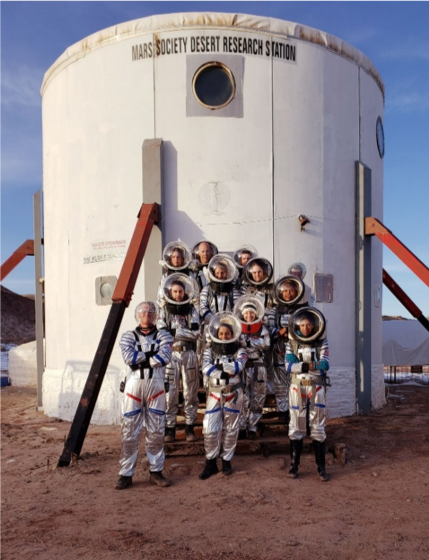
John Hanacek MA – Crew Commander / ARMR Officer
Shawna Pandya MD – Crew Commander
Susan Ip-Jewell MD – AI / Astrowellness Officer
Johannes Svensøy MD – Executive & Crew Medical Officer
Connie Delisle PhD – Health, Safety & Operations Officer
Morgan Kainu BA – Crew Geologist / Journalist
Jasleen Josan MSc – Crew Engineer / Scientist
Matt Wise – Executive & Operations & Safety Officer
Alyx Skywalker BSc – Crew Engineer
Marufa Akhter Bhuiyan MSc – Crew Scientist
Lee Roberts MSc – Crew Geologist / Engineer
Grace Graham – MAU Training Intern
CREW NARRATIVES
Commander Shawna Pandya, MD. – Callsign “Night Owl”
The MAU 001-MDRS 220 mission rep resented the first-ever “station-to-station” mission at the Mars Desert Research Station, and I feel honored and privileged to have served as a co-Commander during this historical mission. With it came a lot of firsts and learning lessons. I appreciated the opportunity to lead my crews with “military” and “consensus” governance models, although I must admit that in truth, there is a great degree of overlap between the models. No military commander can simply order their men into the line of fire – the team must agree to do so, which in and of itself is a form of consensus. As such, I did not notice any great degree of difficulty moving between the two governance models. This was also partially helped by the fact that the MAU Station crew, which operated on a consensus model, was always relatively small (2-3 crew including the Commander), therefore, it was very easy to build a consensus. Co-commanding was also a novel experience, and I enjoyed evolving with, growing with and learning from my co-Commander. Morning and night-time briefings helped us develop a shared mental model of our daily plans, and one lesson I learned was that it is best to err on the side of repeated-briefings to ensure the build-up of a shared mental model for both crew and commanders.
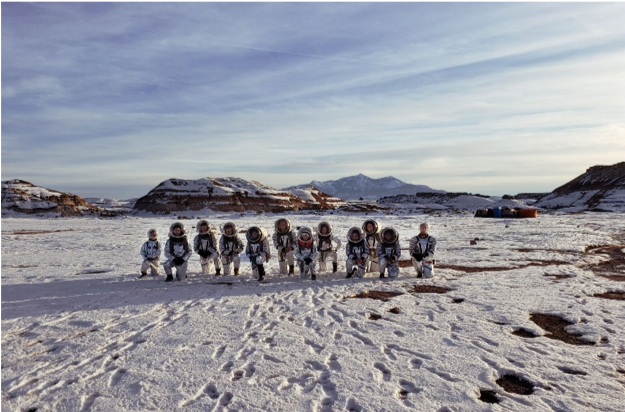
With regards to mission planning, in aviation, we talk about “staying ahead of the aircraft,” and the same is probably true of missions. This mission was task-saturated in nearly all categories – medical, arts and wellness, science and logistics – and in the future, I would work with my science and Executive officers to list all our “nice to have” versus “need to have” objectives well ahead of the mission itself, prioritize accordingly, and draft a mission schedule 2 to 4 weeks ahead of time. This crew in particular was good at stepping up and cleaning, cooking and doing dishes as needed, and made my job very easy, regardless of the station. One is not always so lucky, and future Commanders may need to plan to assign these tasks.
As the mission went on, the crew learned to work as a well-oiled machine, particularly when in small groups, and it is my observation that small groups tend to be productive groups. Spending more time at each station, developing more days with station-specific programming, and observing the station-specific culture that develops would be interesting, both to see how each station develops through the course of the mission, and also to observe how different-sized groups worked together.
I particularly enjoyed teaching, demonstrating and drilling the medical protocols during this mission, and would continue to emphasize this education and its application to EVA in future missions.
As I told my crew today, I learned and grew from my interactions with each and every single one of them, and while this may be the end of one adventure, from the bonds and friendships formed here, it is merely the beginning of the next.
Commander John Hanacek, MA – Callsign “Hummer”
What is power? I have studied this question academically, and now on Mars I have experienced a new level of immediacy and directness to this question. Personal power was the deep running theme of this mission for me. I was forced by circumstance to claim my personal power and my mandate as a leader in the face of strong personalities. I came here prepared to let go of my programming and tap into the inner permission to love myself enough to let go of doubts, fears and limitations – and to fully accept the leader within myself to emerge though this experience.
Establishing power was a running theme both on an operational level as well as metaphysical. I began my commander rotation at the Mars Academy USA (MAU) station, and I felt forced to quickly become comfortable with the freezing Martian nights in the austere habitat without consistent electrical power and just some small propane heaters as we worked to establish electrical systems for the MAU station. At the same time, I was establishing my power as a commander and leader.
The two stations operated on different governance models, MAU on consensus and MDRS in a more traditional hierarchical way. This became a source of growth for me, as I found myself feeling out in the cold when interacting with the MDRS commander, having to constantly ask for briefs and finding myself being talked over and what I felt as subtle undermining in the first few days. I have come to realize that it was a gift –begging me to step into my own personal power and speak for myself. In addressing these challenges directly with my Co- Command during Sol 11-12, I felt I better understood how to manage using Command and Control without being overbearing. My MAU station mandate was immediately more comfortable as it fit my personality – facilitating consensus and creating time and space for decisions to emerge from the crew.
The first week went by in a strange kind of fast eternity where every night was a new challenge, and emotions often ran raw as I refused to back down, and embraced being my authentic self in always vocalizing concerns and truths, even when it did prove unpopular. Before I switched stations to command MDRS, I first took a three-day trip back to San Francisco, CA, Earth to work on a business project. This was surreal to say the least. I found that the Earth looked different and yet I recognized it more clearly. I reflected on how the station-to-station scenario seemed a smaller microcosm of what goes on every day on Earth: power shifting, jostling for authority and negotiation of sovereignty.
When I returned to MDRS I found myself able to interpret the command hierarchy style of leadership and within it, to communicate with authority not domination. I felt that also shifted my relationship with the MAU Commander – we synergistically seemed to reach an equitable distribution of power, authority and sovereignty. The commander who had acted in my place changed the paradigm and brought an entirely new level of operational order and mental transparency to authentical daily plans and intentions. I enlisted her as my XO and we continued a trend of what I see as the golden age of the station-to-station mission, where clear communication, visible plans and balanced power and empathy reigned.
In all, I enjoyed my time at MDRS and MAU – even when it hurt. I feel transformed from my time on Mars, and I feel like this full crew and the stations themselves will always be in my heart. I found my power here on Mars -my ability to stand tall on shifting ground and feel safe – to give orders, to take criticism and to grow with a crew made up of very different personalities. More than the exploration of Mars, this mission was an exploration of myself and the nature of power. I feel I now have been gifted with a secret to share as my final words – within me is the entirety of the all one and also the specificity of a unique authenticity I refer to as myself. The ability to accept both the light and the dark equally yet choose which one I want to express. I accept my shadow as I shine my light. I remember that everyone is me and I am everyone, and I accept that I have preferences and specifics. The ultimate power is in choice itself, in meeting all happenings and interactions with full awareness and complete memory. What will I express as I embrace the complete unity of myself? How will I be with myself in my many faces? The choice is mine if I make it so, and that is where power truly lives.
Commander Connie Delisle, PhD. – Callsign “Coyote”
Space and time have always been a fascination. Prior to MDRS, that meant introspection and personal discovery of boundaries to set and borders to let go. In in Mars flow of time I feel it’s bigger than that – and non-random. Rather, an intricate design to clear the inner space and for all to share insights as a collective wisdom for those going back to Earth or headed for other far away planets and galaxies. This first ever-Station-to-Station mission has answered some questions but ultimately more so challenged my theories and conviction. It was a completely unexpected honor to serve as MDRS Commander for Sol 8-11, leading me to affirm that even on Mars my true calling is of service and support to leadership. As Commander, the following three insights are offered: First, self-monitoring and day-to-day crew checks for wellness, adjustments to operational tempo and re-alignment with Mission Objectives requires extreme and ongoing vigilance. Second, Mars is a team sport. I found that delegation and follow up worked equally well on Mars and it does on Earth; the main difference is in the cycle times being very short. Third, crew diversity and culture are powerful. In seeing and feeling through other’s perspective, then patience and understanding transformed hurt to healing. On a personal note, it was entirely freeing that Crewmate and Astrological Researcher Marufa Akhter Bhuiyan validated for me, the realness of living in imaginary time- something I’ve been doing on Earth without knowing what it meant. Even though current time was short as MDRS Commander, teachings and reflections from MAU and MDRS Crew along with MDRS Director and her team will live on through time immortal.
Morgan Kainu – Callsign “Grass Snake”
This mission was a complete success with respect to teamwork and spiritual growth together and has paved the path for future endeavors together. I would be happy to do a future mission or research with any one of the crew in the future.
Matt Wise – Callsign “Fox”
This was a unique opportunity to practice innovation and group problem-solving in an isolated environment.
Johannes Nordsteien Svensøy M.D., M.Sc.EMDM -Callsign “Raven”
This was an opportunity to solve real-life challenges in a simulation, which is critical if you are going to push the boundaries in austere environments and extreme medicine.
Project Reports
Johannes Svensøy MD callsign “Raven”
Butterfly iQ Ultrasound tele-guidance, Butterfly Network.
The Butterfly iQ was brought onboard the current mission with much appreciated help and guidance from the Butterfly Network. The Butterfly iQ is a revolutionary handheld Ultrasound System integrating the most commonly used probes in medical ultrasound imaging into only one probe. The device is operated from small-screen devices such as mobile phones or tablets, making this the perfect tool for ICE (Isolated, Confined and Extreme) environments such as this MAU-MDRS Mission. The Butterfly was integrated into teaching and training of both medical and non-medical personnel, particularly into trauma scenarios in the field. The objectives of the training were device familiarization, and to get a hands-on idea of POCUS (point-of-care ultrasound) and FAST (Fast Assessment for Sonography for Trauma) protocols. The Butterfly Ultrasound was also used during simulation for assessment of an injured astronaut after evacuation and decompression into the station. The Butterfly Ultrasound and the program is easy to operate, and with the tele-guidance tool, a medical expert can guide, analyze, and explain the findings to the operator. This project was met with an overwhelmingly positive response from both medically and non-medically trained personnel, and all were able to appreciate its use case for future missions and simulations. My recommendation is to further integrate the Butterfly and its multiple capabilities into more simulations in future missions. Appreciation and thanks to Butterfly Network for the possibility to test this tool in austere environments such as here on Mars.
John Hanacek MA
Virtual Reality and Spatial Computing Demos
Objectives: Give the crew access to cutting edge Virtual Reality (VR) and Spatial Computing/ Mixed Reality headset technologies.
What was done: Brought an Oculus Quest VR headset and a Magic Leap Spatial Computing headset, both loaded with applications.
Did not achieve objectives, only one member of the crew experienced just one device.
Needed to schedule dedicated time for the activity, yet this mission had so many activities that it often got bumped due to other projects taking immediate precedence as being more mission relevant.
Future plans are to once again bring the devices, yet firmly establish a time window of at least an hour to demonstrate them. Next time I will need to get into the schedule much earlier and stay persistent that it is mission relevant to have the crew experience these next generation technologies.
AvatarMEDIC HoloTRIAGE ™ Application Testing
Objectives: Conduct user testing on the newly developed prototype HoloTRIAGE mobile phone AR application for multi victim trauma scenario training. Develop survey for said testing.
What was done: Brought application loaded on a mobile phone, had any interested participants sign MNDA with AvatarMEDIC company
Achieve Objectives? Partially. Did not find time to conduct any tests but we develop a survey which can be used for subsequent tests.
Why not achieve? Application was only completed within the last four Sols of the Mission, not leaving adequate time to slot in a testing time period into the already crowded schedule.
Future plans are to test the application on Earth and further refine the application and the survey methods. Additionally, utilizing the training from this MDRS/MAU mission to inform additional curriculum modules for the application and enhance the quality of the training.
Susan Ip-Jewell MD. Callsign “Chinthe”
Teleanesthesia “Vapojet” Simulation Training
For pre-simulation training, telepresence was proposed to train the crew members in basics surgical interventions such as Debridement and Suturing using simulation tissues. During the sim, the crew learnt and conducted the teleanesthesia protocols using the 3D Printed VAPOJET TM
Mars Governance Models
Designing future strategies for implementing a form of governance model in isolated and remote groups to include ethics, rules and regulations. What infrastructure model is needed to ensure optimum health, wellbeing, increase productivity and collaboration for crews.
The implementation of two different governance models for each station was an interesting experiment for the crew teams. The MAU station adopted the consensus model and MDRS station adopted the “military hierarchical” model. Both crew teams experienced the two models with positive outcomes and was able to live and work together and quickly adapting to the station environments and the limitations and restrictions imposed during the mission.
FOLDABLE MICROSCOPE PROJECT:
Paper foldable microscope was assembled by crew and used to detect microorganisms and potential bacteria and contamination in the soil samples collected during the geological EVAs.
Meals for Mars Project – PI: Sian Proctor PhD
The Elements meals used freeze-dried “meals” specifically designed for long duration spaceflight missions for astronauts and crews in austere I.C.E was implemented in the mission for several days with selected crew participants.
Matt Wise Callsign “Fox”
Station to Station Data Link
Objective- Create a wireless data link between MDRS habitat and MAU station
We emplaced mesh network access points between MAU and MDRS to create a station to station localized network for sharing files and operational data. Lack of solar panels and batteries forced us to run power cables to each access point, however the data was relayed very effectively via wireless signal.
Result- The concept was proven, but full point to point connectivity failed due to insufficient access points to span the distance between stations.
Future- In the future having more access points for the mesh network will alleviate connectivity gaps. I’ve designed a one-piece wireless repeater which solves this issue. Teams will be able to deploy a modular mesh network to effectively expand station connectivity
‘Mars’-bucha Bacterial Production Study
Digestive health and, more specifically, the gut bacteria biome are critical considerations for long-term habitation off world. Complex solutions requiring resource intensive production will be less than optimal from both a transport and operation standpoint. Kombucha can be easily produced and requires only tea, sugar, and water. The bacterial culture is extremely resilient and not only reusable but self-replicating after only 7-14 days in ideal conditions. Producing such a beverage is both healthy and has a positive effect on morale. While a number of sugar sources are available this study assumes sugar cane grown in the greenhab as well as various types of tea which will also provide excellent oxygen production and a good cellulose fiber source for production of other materials. The bacterial culture can be easily transported from earth or carefully isolated in the hab.
In our study we began with a 3 gram sample of isolated bacteria, mixed with 1 gallon of brewed tea and sugar, and allowed to propagate in a warm, dark container. After 8 days the bacteria colony had formed a thin layer in the liquid. These bacteria consumed most of the sugar and caffeine in the liquid and reproduced large quantities of beneficial bacteria. 75% of the liquid was drained from the container, bottled, and mixed with approximately 2oz of sweetened fruit, tea, and/or spices depending on the taste of each crewmember. After 3 days of second fermentation the carbon dioxide expelled by the bacteria consuming sugar gave the beverage a slight carbonated kick and the color had changed to deep reds and golds depending on the ingredients added. They were also delicious! The remaining liquid was enriched with sugar and left to sustain the bacteria colony until we’re ready to produce the next batch of Kombucha. As of this writing a second bacterial layer has formed from the original colony. This layer could be separated and used to begin an entirely new container of Kombucha.
The health benefits of Kombucha are far reaching, as is the simple enjoyment of a tasty beverage. Additionally, the fermentation process produces CO2 which would be beneficial to plants growing in the green hab. The greenhab, in turn, is a warm environment, a perfect location from producing Kombucha. Production is non-resource intensive and the yield is high. This is a perfect option for a Mars habitat.
GOLDEN BUBBLE
Objective- Use the Golden Bubble medevac device in an analog Martian environment and successfully deploy, load, and transport a mock-casualty to higher medical care.
The Golden Bubble is a pressurized emergency medevac device comprised of a backboard, inflatable transparent membrane, and life-support systems. The Golden Bubble is designed to be used in emergencies to provide a pressurized, clean-air environment during a medical emergency. The casualty is strapped onto the backboard and then the membrane is inflated around them creating a protective bubble. Access points along each side allow first responders to assess and stabilize the victim without exposing them to toxic or low-pressure, low-oxygen environments. The inside pressure is regulated to a specific atmosphere and excess C02, fumes, dust, and other contaminates are vented to the outside. The purpose of this device is to extend the Golden Hour and give first responders more time to move a casualty to higher care.
In this case we used the Golden Bubble as a medical scenario training aid. A mannequin was used as a mock-casualty and was subsequently put inside the Golden Bubble, assessed for injuries, and transported by foot, then by rover, to the nearest airlock for higher medical care.
Result- The test was highly successful, and the Golden Bubble performed better than expected in many ways. It was relatively easy for any individual crewmember to carry and deploy. A longer version will, however, need to be constructed for patients taller than 72” and improved air tank capacity will be necessary for a production version.
Future Plans- Going forward I will continue to improve the functionality and ergonomics (particularly for patients wearing EVA suits) of this design and create a more streamlined and functional production version.
Shawna Pandya MD. Callsign “Night Owl”
ISANSYS Sensors
The ISANSYS Lifetouch 20g sensors, blood pressure cuff and pulse oximeter were deployed on this machine to see how they would fare in an ICE environment. The sensors are capable of measuring heart rate, respiration rate, heart rate variability, one-lead EKG and accelerometry. When paired with the other two devices via Bluetooth, the system is capable of measuring blood pressure and pulse oximetry as well. In this mission, 4 patches were deployed on 4 crew members (2 male, 2 female), as a test of both longevity over a 2 week mission, and as a test of hardiness, as all 4 crew members spent one week at the MDRS Hab, and one week in the MAU Station, in tents in a winter desert environment. The Lifetouch Patches have been previously deployed in parajumper and military field exercises, the Cleveland Clinic, in Antarctica with the NASA Johnson Space Center Exploration Medical Capability team in drysuits, underwater in wetsuits, and in parabolic flight. In this demonstration, the patches were both used to collect biometrics, as well as make notes of how the patches reacted when used continuously over a two-week mission, with intermittent battery replacement as needed, as well as with continuous exposure in the cold desert environment. Subjectively it seemed that sensor battery life diminished in the tent environment. There were some issues with QR code reading, initially with pairing the blood pressure cuff to the ISANSYS tablet, and later on with the pairing of the tablet to the LifeTouch patches. These eventually resolved, but from previous experience, it seemed like the patches required a new session to be started every time a session was transferred, rather than transferring back to a previous user. Of note, the tablet’s ability to read QR codes seemed to behave better once the tablet was connected to the Internet. By the end of the mission, most batteries had failed, and sessions were either intentionally ended after catching up on all data, or ended prematurely with batteries dying, resulting in the loss of some data. Early on in the mission, the ISANSYS/Stark team confirmed that they were able to view uploaded data on the secure server. This ultimately represented a successful demonstration of the Lifetouch system in an extreme environment. In the future, to minimize data loss, it may make sense to schedule “maintenance” Bluetooth catch-up sessions at 3-4 day intervals. With future deployments of the Lifetouch Patch, it may be interesting to have the subjects keep a journal of particularly notable physical, physiological or emotionally events, and later correlate those events to sensor readings. As a final point, the timestamp on the table is 2 hours ahead, and this was not corrected so as to not interfere with the tablet settings.
EVA Biometrics Study
The EVA biometrics study looked at crew wellness parameters pre and post-EVA. Parameters measured include blood pressure, heart rate, pulse oximetry, weight, and questions assessing hydration status and subjective notes pre-EVA, and questions regarding subjective assessment of physical exertion, mental exertion and emotional distress. The study succeeded in acquiring some data points, but there is room for improvement as to how the study is conducted in the future. Firstly, the vital sign measuring equipment was only available at MDRS station, hence only EVA teams leaving from MDRS station could be consistently assessed. In addition, given the large size of the crew, the number of times a single individual was assessed was limited, usually ranging between 0 to 3 times over the course of the entire mission. Lastly, there were moments, when, either due to time constraints or simply forgetting, that pre or both pre- and post- data point collection was missed, limiting the value of the results. Future studies would do well to regularly collect pre- and post- EVA data. From the data points collected, however, most crew members seemed well-hydrated pre-EVA, no crew members lost weight from dehydration based on the data, and no vital signs were grossly abnormal.
Psychological Resilience in ICE Environments Study
The psychological resilience in ICE environments study was conducted in partnership with Dr. Nathan Smith of the University of Manchester, and this study was initiated in partnership with NASA as an evaluation of psychological resilience of astronauts, and later expanded to adults on expeditions of >10 days in other expedition and isolated and confinement environments. The study consists of both pre and post-mission surveys, as well as twice daily mission diaries. There were difficulties with obtaining data due to the initial state of emergency at the start of the mission, and accessing the digital surveys, which put those partaking in data behind from the outset. In addition, the study data may be affected by the highly dynamic nature of crew members moving in and out of “quarantine,” affecting the data. Ultimately, because of the limited internet, nearly all surveys were completed in retrospect, also possibly affecting the data. These notations will be made when the final data is sent back to the primary investigator. If incorporating this study into future missions, it would make sense both print paper copies ahead of time, so as not to be hindered by technology lapses, and also to schedule time pre, post and in-mission to ensure that data is captured daily.
MAU Ambassadors Program
The MAU Ambassadors Program was started during the second week of the MAU Command under Commander Pandya, with one Officer from MDRS coming to spend a night and part of the next day with the MAU crew to foster cross-station professional competencies, relationships and cultural exchanges. During its initial run, 3 MDRS officers, including the MDRS Journalist, Engineer and GreenHab Officer spent one night each at the MAU station, and all expressed positive sentiments about their stay, commenting on either the view from MAU station, the time spent with the MAU crew and/or discussing mission logistics. All in all, this initial trial run of the program was promising, and may be worth incorporating into future missions.
ABOUT MARS ACADEMY USA (MAU)
Mars Academy USA (MAU) is the 21st Century Academy “offering experiential learning with exponential technologies”. MAU is creating a new paradigm in learning using exponential technologies, simulation-based learning, and edutainment. MAU is an organization with a mission to train the Next-Gen Analog Astronauts, Visionaries, Innovators, Scientists, Explorers, and Astroprenuers. Since 2016, MAU has been developing, testing, and implementing a “Portable Integrated Turn-key Analog Astronautics Simulation Training SystemTM” and creating a unique “Let’s get S.T.E.A.M.E.D”TM (Science, Technologies, Engineering, Art, Maths, Exponential, Digital VRAR) workshops and programs focusing on exponential technologies, such as, teleanesthesia-telesurgery, VRAR, solar powered 3D Printing, HoloTRIAGE, and Gamification. The company offers their unique “space-focused edutainment” programs to academia, commercial and corporate markets, and general public. The mission of the organization is to Educate, Empower, Entertain, Engage, and Expand an international, global “voice” in support of human space explorations, technological innovations to enable future settlement on off-world planets, Mars or Moon, with focus in spin-off benefits for improving life on Earth. MAU unique portable basecamp comprised of various size “pods” with connecting tunnels which allows for multiple configuration design to adapt and suit the surrounding environments and number of crew participants. The basecamp can be easily assembled and disassembled for quick removal after the mission. www.marsacademyusa.com
ABOUT MARS MEDICS MISSION (MMM)
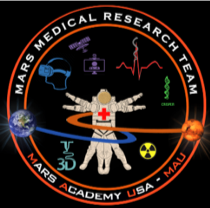 Mars Academy USA (MAU) is a series of Analog Astronaut Simulation Training missions focusing on space medicine, biomedical and biotechnology innovations. Mission crews enter fully “in-person” immersive simulations living and working together in a transdisciplinary, multicultural analog Mars environment in MAU’s mobile, modular Mars Basecamps. The missions are specifically focused on innovations for explorations in space medicine, astro-wellness, space food production and nutrition. The crews will test, develop and innovate ways to support future human explorations and settlement on Mars and Moon. The crews will test design and integrate exponential technologies, such as, VRAR, 3D printing, and even genetic tools.
Mars Academy USA (MAU) is a series of Analog Astronaut Simulation Training missions focusing on space medicine, biomedical and biotechnology innovations. Mission crews enter fully “in-person” immersive simulations living and working together in a transdisciplinary, multicultural analog Mars environment in MAU’s mobile, modular Mars Basecamps. The missions are specifically focused on innovations for explorations in space medicine, astro-wellness, space food production and nutrition. The crews will test, develop and innovate ways to support future human explorations and settlement on Mars and Moon. The crews will test design and integrate exponential technologies, such as, VRAR, 3D printing, and even genetic tools.

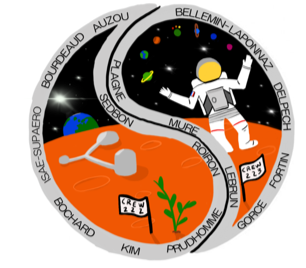 Our mission could be summed up in one word: adaptability. During those two weeks, we had to adapt to a whole different planet. The way we fed ourselves was different, our daily routines changed, the landscapes we saw were completely foreign. We had spent the entire year preparing for this mission with the previous crew (Crew 222), but it still was very different from all our expectations. We have learned a lot about how to live on Mars, science and friendship. We have learned how to evolve in an environment that we did not know and was sometimes dangerous. We got used to the Hab and this incredible station that we discovered on our first day.
Our mission could be summed up in one word: adaptability. During those two weeks, we had to adapt to a whole different planet. The way we fed ourselves was different, our daily routines changed, the landscapes we saw were completely foreign. We had spent the entire year preparing for this mission with the previous crew (Crew 222), but it still was very different from all our expectations. We have learned a lot about how to live on Mars, science and friendship. We have learned how to evolve in an environment that we did not know and was sometimes dangerous. We got used to the Hab and this incredible station that we discovered on our first day.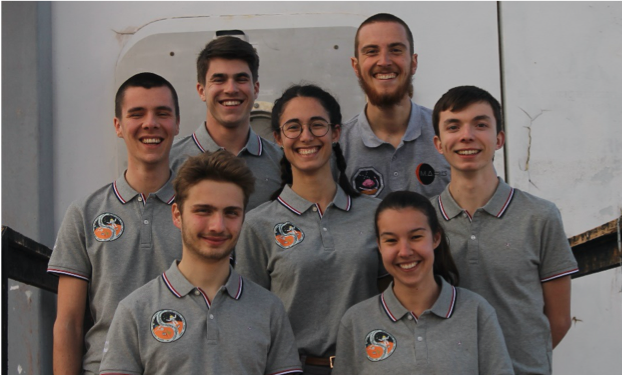
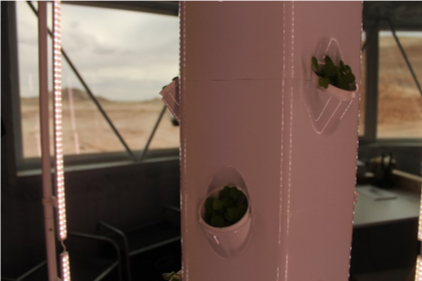
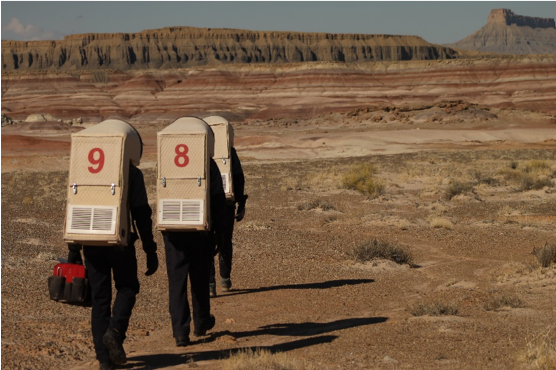





 Mars Academy USA (MAU) is a series of Analog Astronaut Simulation Training missions focusing on space medicine, biomedical and biotechnology innovations. Mission crews enter fully “in-person” immersive simulations living and working together in a transdisciplinary, multicultural analog Mars environment in MAU’s mobile, modular Mars Basecamps. The missions are specifically focused on innovations for explorations in space medicine, astro-wellness, space food production and nutrition. The crews will test, develop and innovate ways to support future human explorations and settlement on Mars and Moon. The crews will test design and integrate exponential technologies, such as, VRAR, 3D printing, and even genetic tools.
Mars Academy USA (MAU) is a series of Analog Astronaut Simulation Training missions focusing on space medicine, biomedical and biotechnology innovations. Mission crews enter fully “in-person” immersive simulations living and working together in a transdisciplinary, multicultural analog Mars environment in MAU’s mobile, modular Mars Basecamps. The missions are specifically focused on innovations for explorations in space medicine, astro-wellness, space food production and nutrition. The crews will test, develop and innovate ways to support future human explorations and settlement on Mars and Moon. The crews will test design and integrate exponential technologies, such as, VRAR, 3D printing, and even genetic tools.
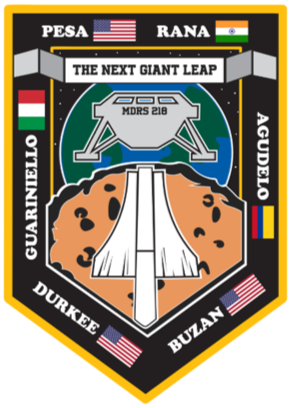
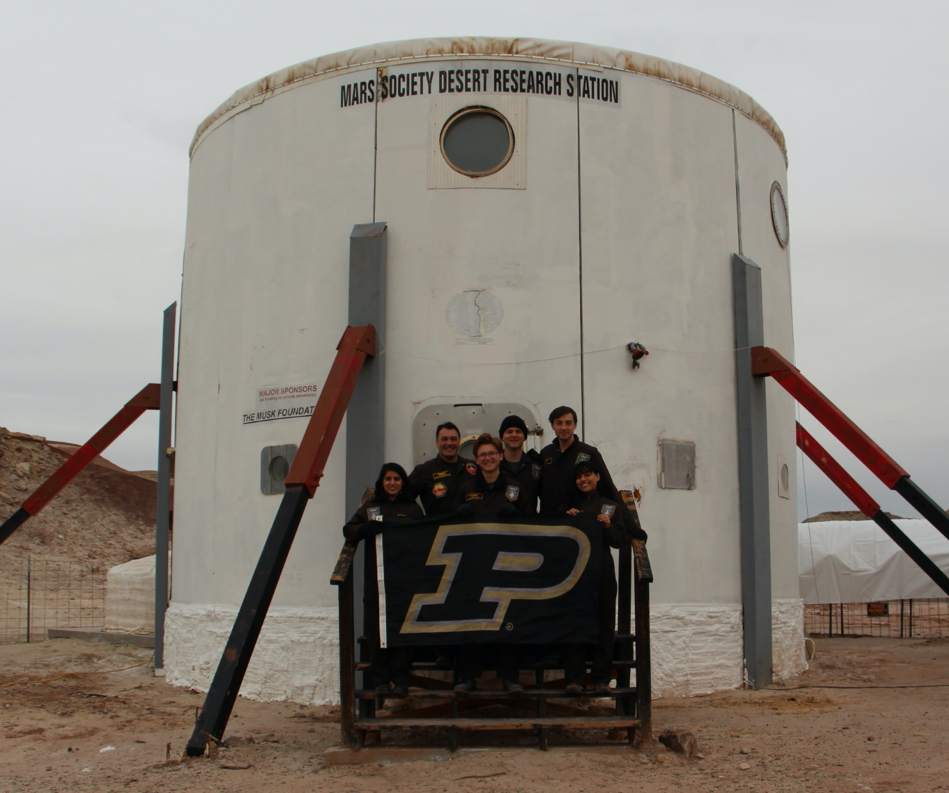
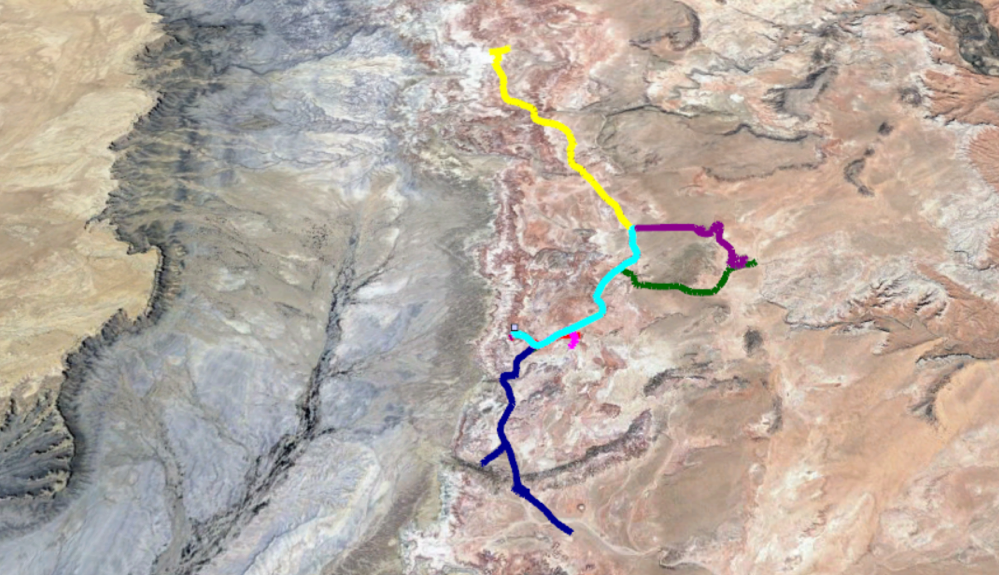
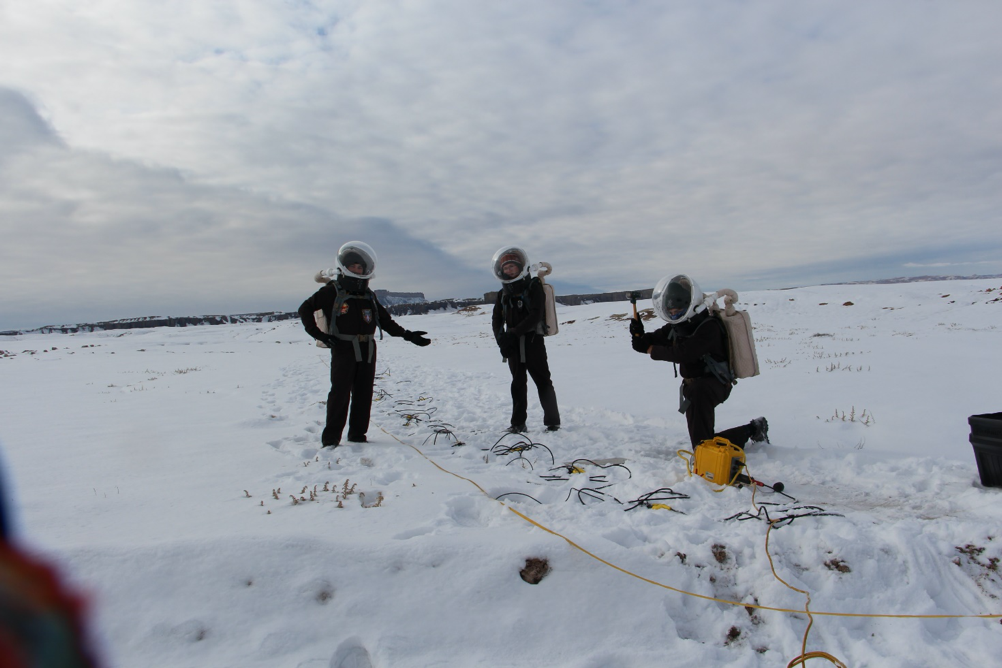

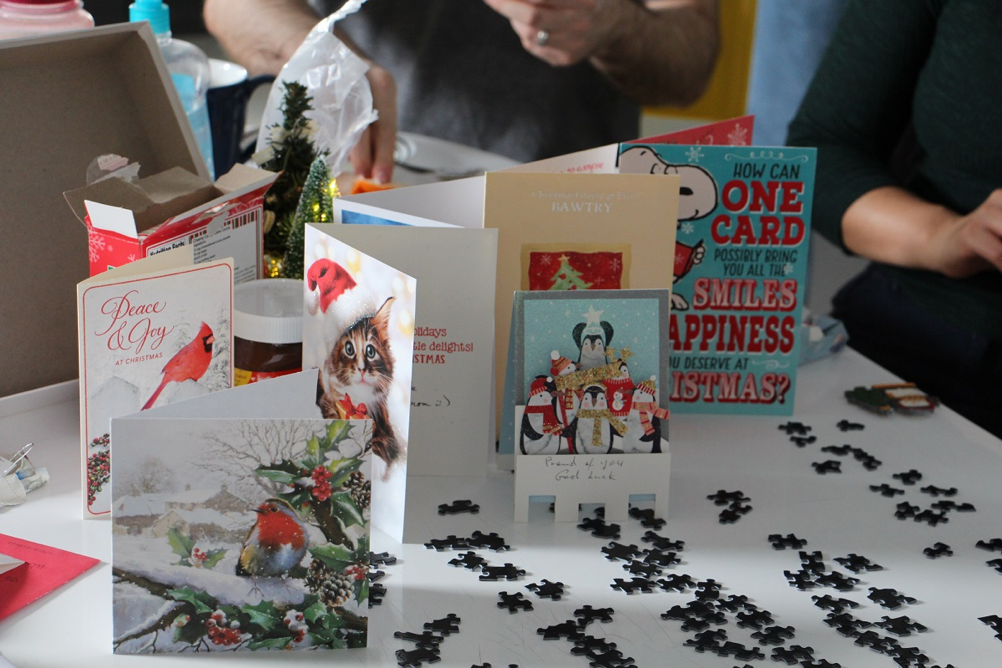
You must be logged in to post a comment.